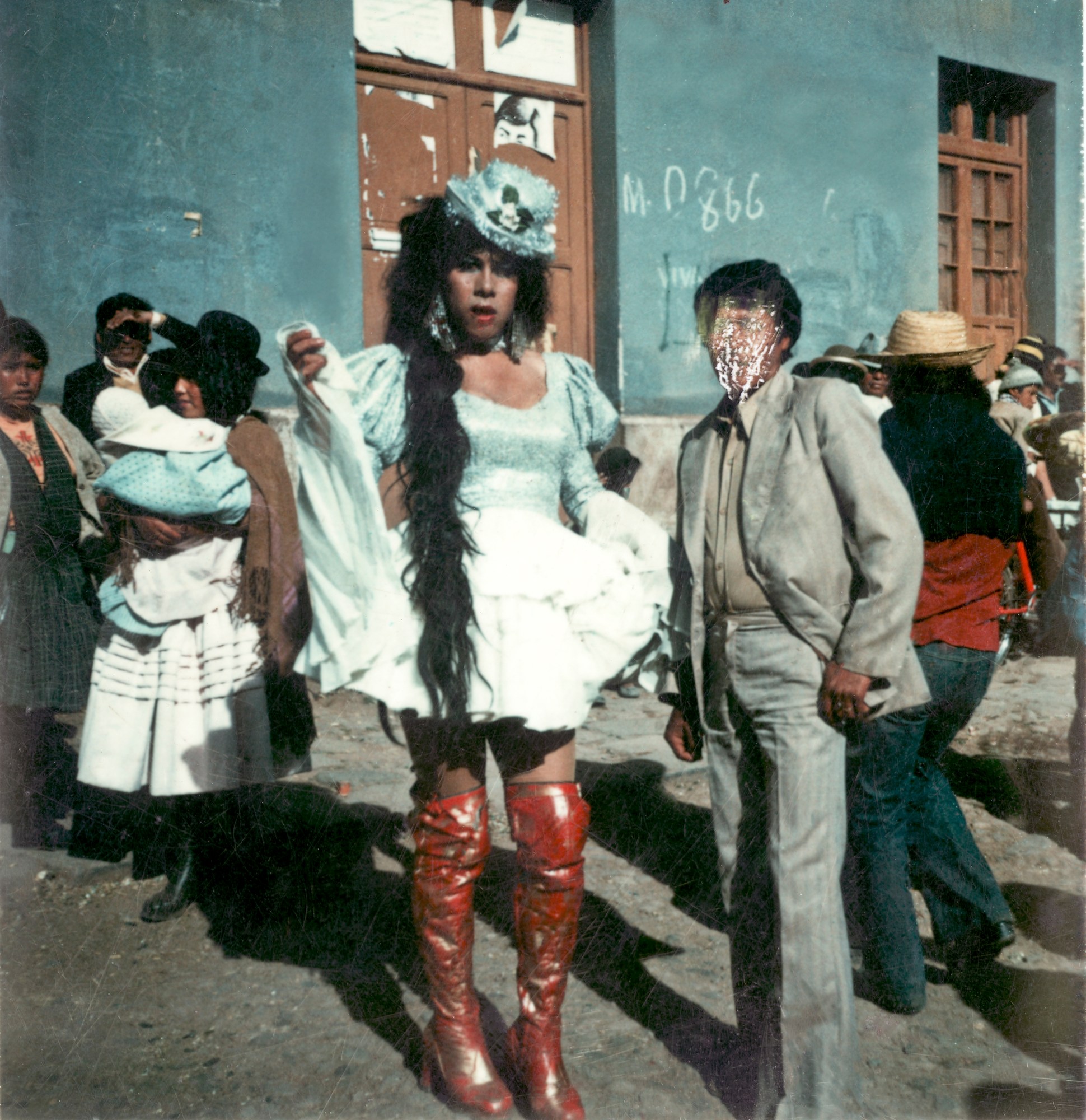From the 60s onwards, a chosen family of queer performers used Bolivia’s street carnivals to flaunt a camped-up, Andean drag. For all its opulence, the look was one steeped in socio-political defiance, acting like a glitter-splashed affront to the country’s military dictatorship. Clicking their heels and contorting their faces in orgasmic expressions, these gender-non-conforming dancers called themselves travesti, a term Indigenous researchers align with two-spirit people who occupy a third gender – rather than trans or transvestite.
Expressing their femme personas, these fearless queens deployed choreographic and stylistic references rooted in folklore and colonial histories, spinning a complex web of queer Indigenous identity at odds with the evangelising hand of Christianity. To do so, they called on a specific character, La China Morena, which was once the reserve of straight family men sanctioned to only cross-dress at the annual carnival. Reclaiming this, the likes of Barbarella, Lucha, Ofelia, Titina, Juana, Candy and Diega changed the game, leaving an indelible mark in Bolivian popular culture that influences how cis women dress at carnivals to this day. “In Aymara, the word ‘china’ means female or woman but also has a sexual connotation – it refers to the female sexual organ,” explains Bolivian artist and activist David Aruquipa Pérez. “Morena just means brown – so, brown female. It’s kind of like word play.”
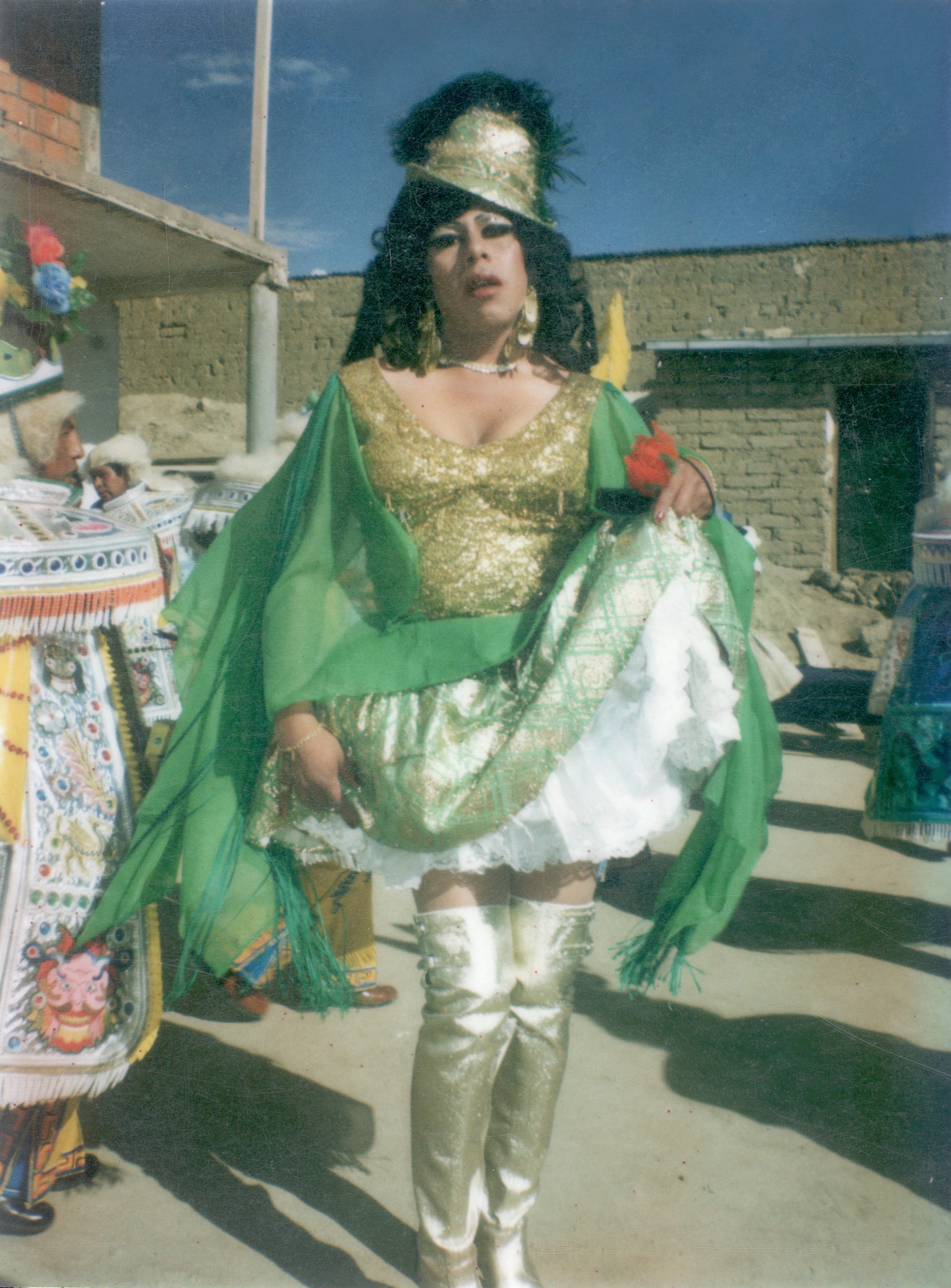
While both derided and adored, the travestis’ impact remained largely undocumented. That is, until 2009, when David began collecting photographs from the original performers, many of whom have since died. In return, he vowed to keep their tales alive. Bringing a selection of 40 images to Auto Italia, an east London art institution focused on showcasing queer art outside of the Western canon, David shares a heady insight into the travestis’ existence. Charting their irreverent reign up until the late 70s, the exhibition hones in on the cities of La Paz and Oruro, where they danced in a visual act of protest.
First introduced to carnivals in the 1930s, La China Morena was used as part of the Andean folk dance, la morenada, which itself dates back as far as the Spanish colonisation of Bolivia. “[It] started as a dance from Afro-descendant people coming during the slave trade, especially to Potosí, which was one of the main historical cities [in Bolivia] for slave trading,” David says. At this time, vineyards were rife, and Black slaves were used to stamp grapes, a motion that informs the morenada dance. “From there, it started migrating to Oruro and towards other valleys.” Since, this prickly history has been carried by indigenous Aymara people practicing the morenada.
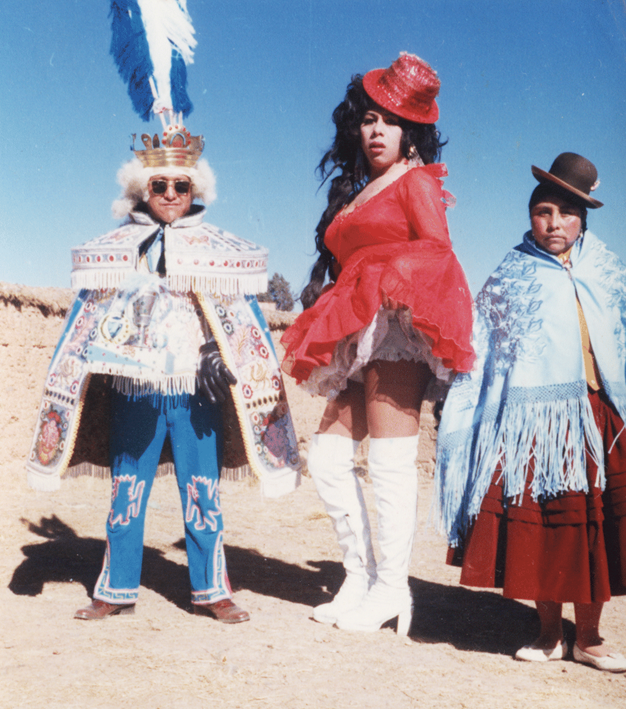
Similarly, this theme of labour was pivotal in making La China Morena a patron saint. To begin, dancers projected the graft of working Latin American men into a lusty, sensual and hyper-feminine dance. Naturally, this was – problematics aside – ripe picking for the mariposas (fairies) and maricas (fags). In its straight iteration, La China Morena was masked, her skirts and boots shorter. By the time the mariposas were involved, traditions fell by the wayside, substituted with longer hemlines, climbing knee-highs in silver or polished red and rhinestone-studded accessories. Eventually, they ditched the masks in favour of make-up, showcasing luscious bouffants and posing for Marilyn Monroe moments. Once a folkloric diva, La China Morena was now a gay icon.
In fact, the travestis behind this radical rebrand became celebrities in their own right, standing at the forefront of LGBTQ visibility. In La Paz, for example, the feisty Barbarella was deemed royalty among the gay community, serving jail time for her public disturbances. “At the time these performers were living in, they were probably seen as sick,” says David. “All the performers knew each other. Most families would decide not to have them or send them to a psychiatric centre.”
So the story goes, Barbarella’s main claim to fame occurred in 1974, when she gave fascist tyrant Hugo Banzer Suárez a peck on the cheek after the carnival. A man responsible for countless deaths, suspicious disappearances and the deaths of protesters, he reacted by banning the travestis from these events. Fortunately, these crafty queens had other plans, taking their gold lame ra-ra dresses to rural communities instead. In one photo, Lucha stands side-on to the camera, replete in red lace and a bedazzled hat, finishing the look with white boots and a flash of frilly undies. To her right, a man in a traditional tiered cape; to her left, a woman in a classic Bolivian bowler hat and shawl. The trio appears nonplussed. In another shot, Ofelia and Liz stand proudly beside two adolescent girls, the Oruro valleys behind them and gilt skirts gleaming.
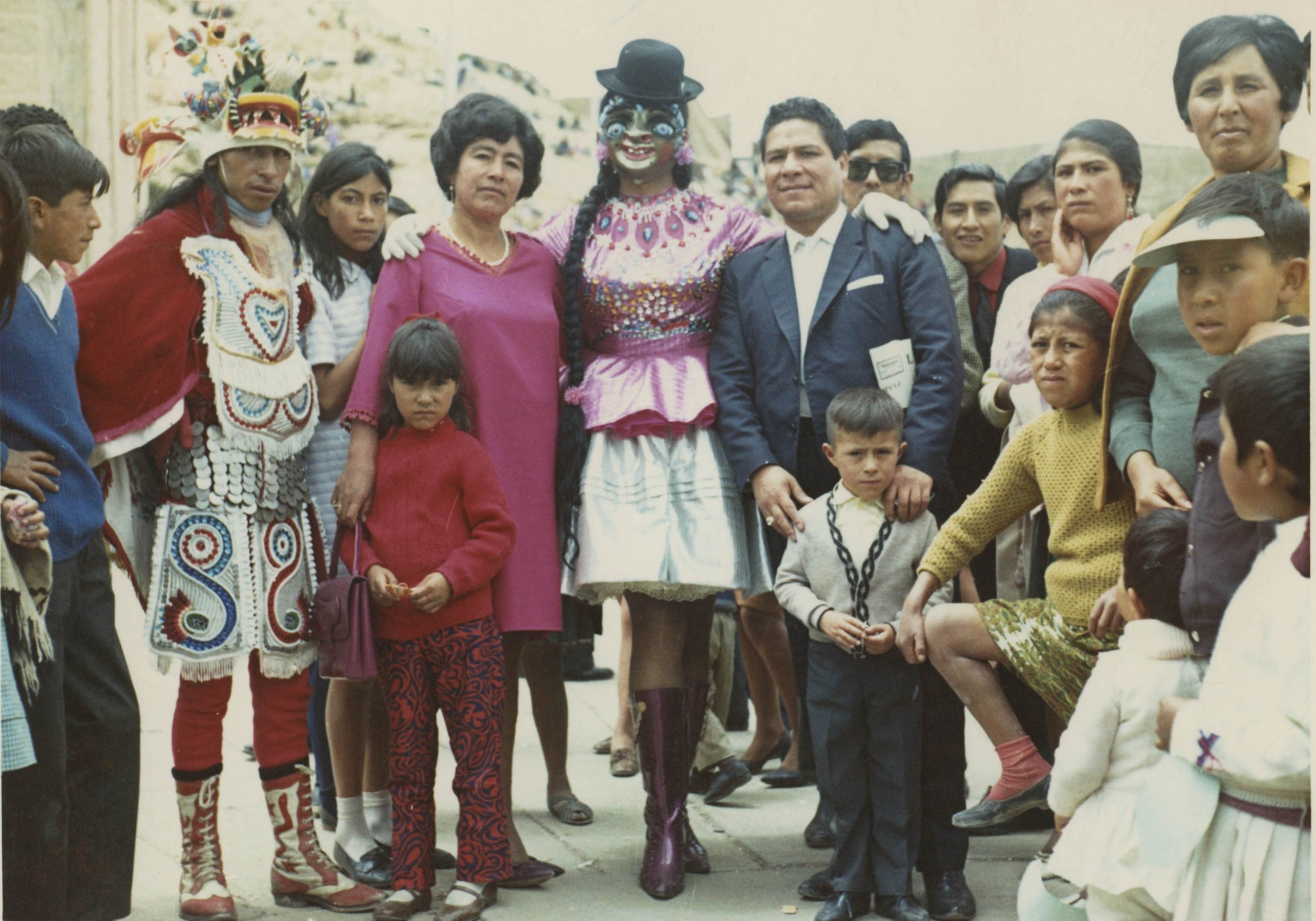
Reviving untold stories, David’s approach is an act of memory work, sifting through the past for nuggets of resistance that even he might have missed. Indeed, he had once believed that LGBTQ collective Familia Galán was the pioneer of Bolivia’s queer protest until fellow member Diega set him straight, opening up a network of queens past. These days, David sees queer resistance in Bolivia as an ongoing but knotty lineage, predicated on the revival of pre-colonial ideas that refuse Christian binaries of male and female, and treat tradition as a tool to tweak.
Until the nineties, the travesti Chinas Morenas were attending rural carnivals, before eventually petering out. Next, the Familia Galán followed suit, ushering in another carnival character, Whapuri Galán, a sissified, sequinned spin on the hyper-masculine patron saint, Whapuri. “The carnivals are part of a bigger ecosystem where the LGBTQ community is able to express themselves,” explains David. He himself travels to different carnivals across Bolivia, each one offering a place to let off steam.
David points out a particular photograph. In it, Ofelia stands before a crowd, her skirt in flight and breast wire poking from her cleavage. “This photograph summarises the whole exhibition in a way because it’s about sensuality, pleasure and the performativity of La China Morena,” he concludes. “The people almost want to see more flesh.”
‘Barbarella’s Kiss’ by David Aruquipa Pérez is on show at Auto Italia 14 April – 11 June 2023
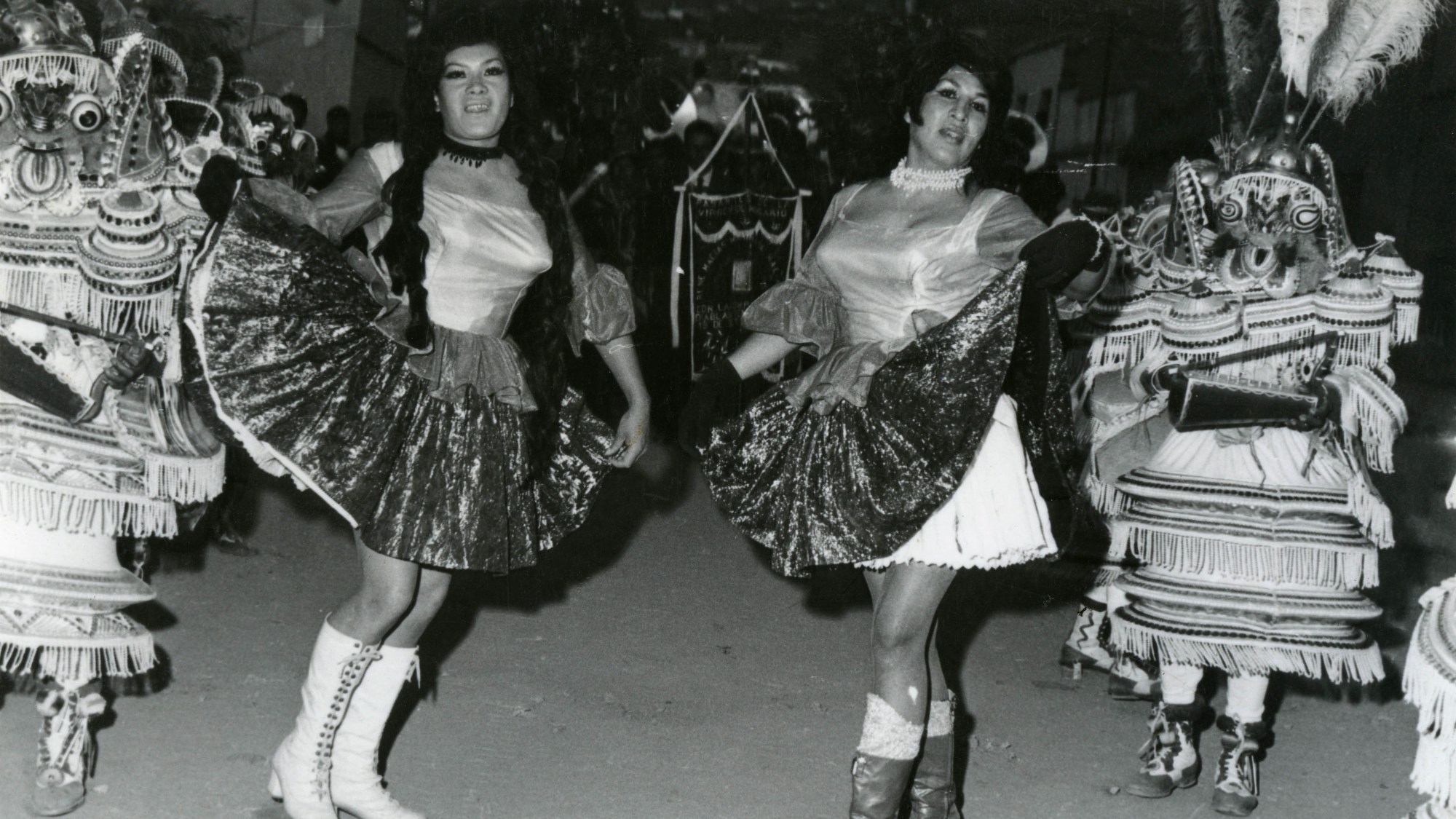
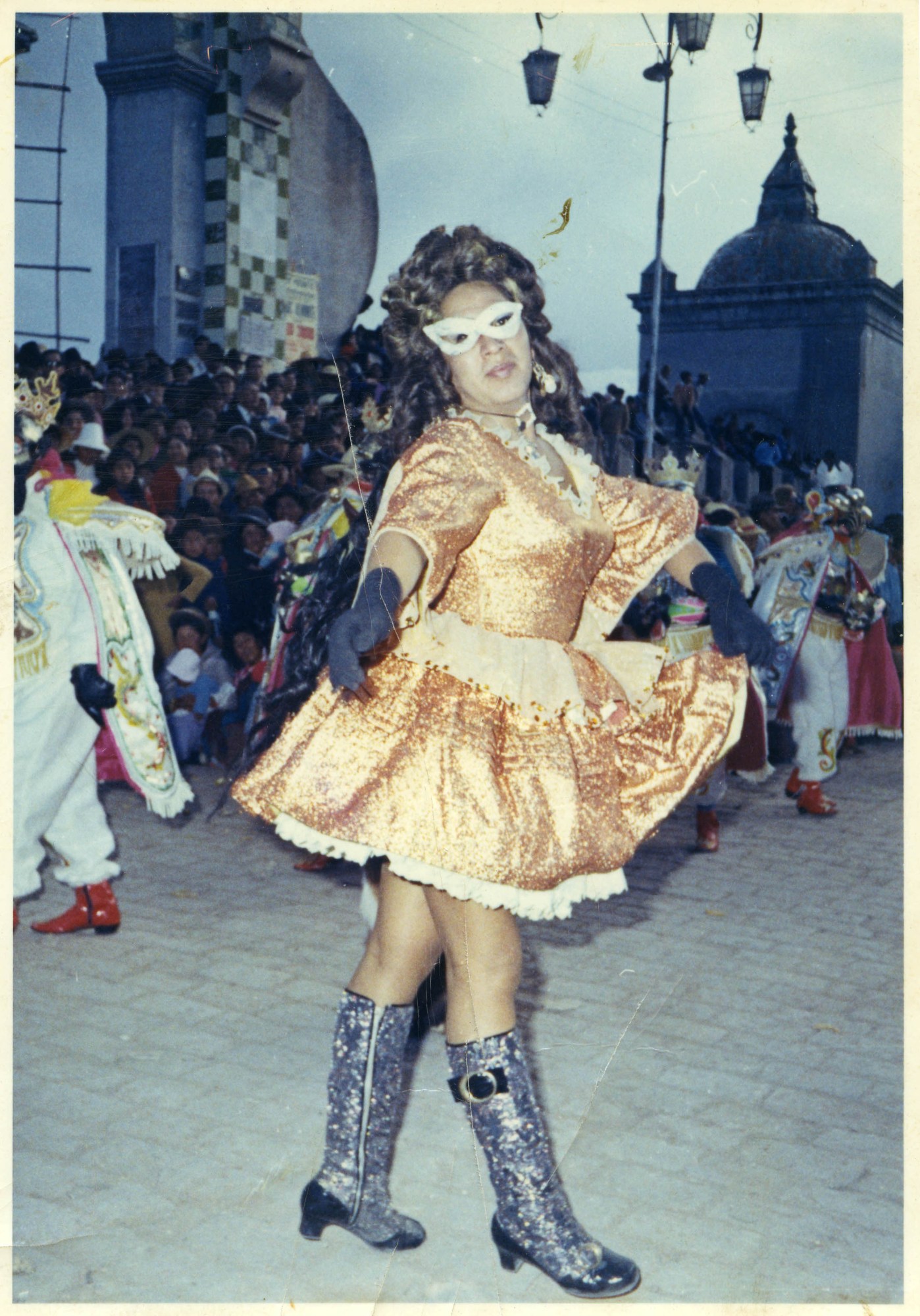

Credits
Images courtesy of Archivo Q´iwa. Diversidad—Comunidad de Investigación Acción en Derechos y Ciudadanía (CIADEC) and David Aruquipa Pérez.
